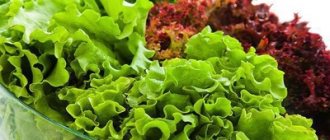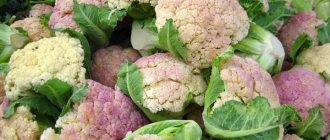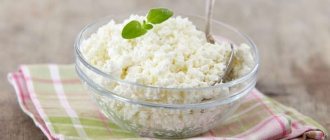Gastritis is a disease that requires a person to follow certain rules in food. Therefore, many fans of Japanese cuisine, when identifying this disease, ask the question: is it possible to eat rolls or sushi with gastritis? After all, medications will not have a positive effect on the gastric mucosa if you do not adhere to a diet and irritate it with various foods.
Moreover, some foods cause aggravation. Therefore, it is very important to sort foods into acceptable, healthy and undesirable.
The difference between rolls and sushi
The basis of traditional Japanese dishes is round rice, seafood, soy sauce and rice vinegar. The process of preparing them is quite simple, the main thing is to choose the right and fresh ingredients.
Sushi is an oblong ball of rice, topped with exotic seafood or a slice of fresh fish.
Rolls are usually wrapped in nori (pressed seaweed) rather than fish. Their preparation is impossible without a small bamboo mat - makisu. It helps to form the products into an oblong roll with a diameter of about 3-4 centimeters, which is subsequently cut into small round or square pieces - rolls. They come not only classic - wrapped in a sheet of nori, but also “turned inside out”, as well as mosaic and colored.
Useful properties of the dish
First of all, let’s find out what beneficial properties the products from which rolls and sushi are made have. One of the biggest advantages is that only seafood is used. In addition, they do not undergo heat treatment, which allows them to retain almost all of their original beneficial properties. It is no secret that if even the most healthy product is boiled or fried, most of the beneficial substances simply disappear.
Red nori seaweed is rich in calcium, iodine and iron. A special variety of wasabi mustard contains many antioxidants, a large amount of vitamin C, and also has a disinfecting effect. Pickled ginger acts as an anti-inflammatory agent and has a beneficial effect on the digestive system, which only has a positive effect on patients with gastritis.
In addition, it is worth mentioning that the components from which rolls and sushi are prepared have a beneficial effect on the condition of nails and hair. So, provided you follow the preparation technology and use high-quality products, rolls and sushi will not cause harm.
But is everything so wonderful? Is it possible to eat sushi with gastritis, especially during its exacerbation? Let's look at the possible harm of the dish.
Product benefits
The most significant advantage when preparing the dish is that seafood does not undergo heat treatment before cooking. This allows you to preserve all the beneficial properties of the products. Since any heat treatment destroys more than half of the nutrients.
For a person who does not have problems with the gastrointestinal tract, sushi and rolls are a storehouse of valuable proteins, iodine, as well as unsaturated acids and vitamins.
Having studied the constituent components of sushi, as well as what effect they can have on the inflamed lining of the stomach, we can conclude whether it is possible to eat sushi or rolls with gastritis:
- Sea fish . Mostly fatty fish are added to sushi - salmon, salmon, trout, cod, tuna. In addition, salted, raw or canned fish is almost always used for cooking. Unfortunately, for gastritis with high acidity, this type of product is prohibited. The diet includes the inclusion of steamed, boiled or baked fish of low-fat varieties into the diet. Salty, fatty foods provoke an exacerbation of the disease. The same applies to types of seafood such as eel and shrimp. In addition, many rolls contain raw fish, which is very difficult for a sick stomach to digest. But sushi can be made without adding such an ingredient. What is good for one person may be harmful to another. Eating rolls for gastritis, stomach and duodenal ulcers should be done with extreme caution for the following reasons: Raw fish, which is most often used to make sushi, carries a risk such as helminth infection or poisoning (if low-quality products are used). In addition, a raw product can be negatively received by a sick stomach and intestines. Some types of rolls use fried shrimp, squid and other inhabitants of the aquatic depths. It would seem that since they are thermally processed, there is no risk for patients with gastritis. However, remember that a diet for gastrointestinal diseases categorically excludes the consumption of fried foods. Smoked and salted fish, which are actively replaced by raw “brethren”, also carries danger. These categories of food are also contraindicated for gastritis and ulcers.
- Seaweed . Allowed for gastritis with high acidity, especially if the pathology is accompanied by constipation. The component has a mild laxative effect. In addition, algae (in case of inflammation caused by radioactive substances, salts of heavy metals) adsorb and remove all toxic elements and radionuclide substances from the body. It is not allowed to eat this product only during an exacerbation of the disease.
- Fish caviar. It is not recommended to eat if you have gastritis, as it contains salt and irritates the mucous membrane. Can provoke the formation of ulcers and their perforation.
- Rice . Helps improve the digestive process, rich in fiber. Well absorbed by the gastrointestinal tract. Therefore, if you have gastritis, you can include it in rolls or sushi.
- Soy sauce . For gastritis, only soft sour cream sauces are allowed. The soy component can have an irritating effect on the gastric mucosa. Contains salts of heavy metals and toxic substances. Therefore, it is prohibited for gastritis.
- Wasabi . Also called Japanese horseradish. The seasoning is spicy. This means that for gastritis, it is prohibited, like all spicy foods and dishes.
- Pickled ginger . Irritates the gastric mucosa, thereby causing additional secretion of gastric juice. For gastritis with high acidity, ginger is contraindicated. It leads to an exacerbation of superficial inflammation and activates the process of inflammation at the cellular level. Has the property of thinning the blood. This can cause bleeding with ulcerative gastritis.
- Greenery . Allowed for gastritis. But it is better to eat it during the remission period.
- Philadelphia cheese" . Has high fat content. For inflammation of the mucous membrane, hard cheeses of low-fat varieties are allowed. May increase hydrochloric acid production.
- Cucumbers . To digest them, the stomach needs to secrete a lot of gastric juice. An increase in the amount of hydrochloric acid, which is part of the secretion of the stomach, can lead to exacerbation of gastritis and peptic ulcers.
- Avocado . It has a detrimental effect on the Helicobacter bacteria, which provokes the development of gastritis and ulcers. Therefore, with this disease, the fruit can be included in sushi or rolls.
- Japanese mayonnaise . Any types of mayonnaise are prohibited for gastritis.
- Food additives – rice vinegar, sugar, salt. Prohibited for inflammation of the gastric mucosa. Provoke an exacerbation of the disease.
Is there any benefit
Undoubtedly, the components of sushi and rolls are very healthy:
- Nori is rich in iodine and vitamin B12
- Rice is very nutritious and rich in beneficial minerals.
- Fish contains phosphorus and Omega-3 fatty acids.
- Wasabi and ginger have anti-inflammatory and antimicrobial effects.
Remember that the benefits of the above products, unfortunately, do not always outweigh the harm they can have on a person suffering from gastritis or ulcers.
Dangers of eating raw fish
Firstly, you need to take into account that raw fish may contain larvae of parasites - helminths, and the fresher the product, the higher the danger. To prevent a parasite from 8 to 12 meters long from invading your intestines, the fish must be deep-frozen.
According to sanitary rules, in order for all parasites to die, the fish should be kept for at least 7 days at a temperature of -18-20 degrees Celsius. Oddly enough, in Japan the danger of becoming infected with helminths is higher than here, since in Ukraine almost all the fish that goes on the shelves comes frozen, and in the Land of the Setting Sun you can also run into the freshest fish - just caught in the sea. It is no coincidence that all freezers have a minimum temperature of -18 °C.
In order for the fish to retain its taste and nutrients and at the same time not to contain pathogenic bacteria (salmonella, E. coli, other infections), it must be thawed and processed in strict accordance with sanitary and hygienic requirements. It depends on the conditions in which the fish was stored, and then defrosted and cooked, whether you will receive harm from its consumption or exclusively benefit.
In those cafes that adhere to high standards of preparation, it is mandatory to store product quality certificates; you can easily find out when, who and where it was brought from, how much time has elapsed since defrosting, etc.
On the one hand, it’s good that the number of sushi bars has increased, and this exotic food has ceased to be exotic. On the other hand, cheapness raises doubts about the high quality of the product.
In addition to the danger of getting infected with worms or poisoning due to violation of fish storage conditions, there is another danger for consumers of sushi rolls: the fact is that the meat of tuna and other marine life contains a high concentration of mercury and heavy metals. Therefore, abuse of these products can also cause chemical poisoning.
What rolls can people with gastritis eat?
Despite the warnings listed above, more and more people are becoming fans of the Japanese dish. Do you also like rolls, but gastritis constantly reminds you of itself with unpleasant symptoms? There is a way out - prepare the dish with your own hands at home. This is a guarantee that you will get rolls of excellent quality, completely harmless to the body and gastric mucosa.
For gastritis, raw fish is replaced with vegetable filling. For example, they put a piece of cucumber or avocado in it. But wasabi, pickled ginger and soy sauce will have to be excluded from the traditional diet.
Why are seafood replaced with vegetables? Because in their unprocessed form they are very dangerous for vulnerable mucous membranes. Therefore, eating rolls and classic sushi is strictly prohibited. But if raw fish and mussels are thermally processed (for example, boiled or steamed), you can already experiment with them.
Homemade rolls and sushi are eaten during remission. There should be no clinical manifestations of the disease. Small portions, consumption no more than 1-2 times a month - and the digestive system will say “thank you”.
What is the danger of wasabi
As we have already said, wasabi is useful only if it is prepared from native raw materials - the herbaceous plant Eutrema, which belongs to the Brassica family, and is indeed a distant relative of horseradish
As we have already said, wasabi is useful only if it is prepared from native raw materials - the herbaceous plant Eutrema, which belongs to the Brassica family, and is indeed a distant relative of horseradish. However, it is not horseradish as such, and is quite expensive.
Therefore, our craftsmen have learned to make this sauce from Ukrainian horseradish, and the color, smell and desired consistency are given to “wasabi” by dyes, thickeners and taste substitutes, as they say, “identical to natural”. Doctors state: such a replacement is inadequate and can lead to further tragic consequences in the form of poisoning, especially if they are abused.
What are rolls?
To decide whether it is possible to eat rolls during an exacerbation of gastritis, let’s look at the nutritional and chemical composition of the dish.
- Sushi is a piece of raw fresh fish, cut into thin strips and laid on specially prepared rice.
- For rolls, cooked rice is laid out on a sheet of nori. A filling of fish or other products is placed on top. Small cylinders with a diameter of 1-2 cm are formed.
- In addition to fish, rolls are also filled with other fillings, depending on taste preferences.
For gastritis and gastric ulcers, dietary nutrition is the basis of the therapeutic complex; let’s find out whether it is possible to include sushi and rolls in the diet for gastritis.
Beneficial features
The product contains a special variety of rice and fish. Nori, wasabi, and ginger are used for seasoning.
- Raw seafood retains its beneficial properties.
- Wasabi is a mustard variety that has antioxidant properties. The seasoning is saturated with ascorbic acid.
- Nori leaf contains iodine, iron and calcium.
- Pickled ginger, used in making sushi, improves digestion.
- The nutritional components included in sushi and rolls have a beneficial effect on the condition of the skin, hair and nails. The components of the rolls strengthen tooth enamel.
The products included in the rolls are classified as dietary. However, if you have gastritis, be careful when eating exotic foods. Gastroenterologists do not recommend eating rolls and sushi, especially in the acute period.
Why are rolls dangerous?
Eating rolls and sushi with gastritis or exacerbation of a chronic process is not recommended. For the filling, exotic seafood (mussels, shrimp) or sea fish are used. Digesting seafood requires a lot of digestive enzymes. The production of elements is a load on the mucous membrane. If you eat rolls for gastritis, the disease can gradually develop into a stomach or duodenal ulcer.
Wasabi or pickled ginger contained in rolls are contraindicated for gastritis with high acidity and irritate the stomach.
What are the dangers of soy sauce?
Soy sauce, in which it is customary to dip ready-made sushi and rolls immediately before eating, is also unsafe. Its main harm is the excess amount of salt. But excess salt in the body causes increased thirst, swelling, and as a result, can cause a hypertensive crisis.
Another danger of salt is that it has the ability to accumulate in joints. Just one spoon of soy sauce contains as much as 2 grams of salt - that is, almost half of your daily intake!
Rolls with raw, dried or even smoked fish are not recommended for pregnant women and small children.
Rice and soy sauce
Is it possible to have rolls and sushi made from rice if you have gastritis? This cereal can improve all digestive processes in the body. In addition, rice is rich in fiber. It is well absorbed and does not cause exacerbation of the disease. Therefore, this component can be included in the recipe.
As for soy sauce, it's worth staying away from. For gastritis, sushi and rolls can only be consumed with soft sour cream dressings. Soy sauce has a negative effect on the gastric mucosa, causing irritation. In addition, the product contains toxic compounds and heavy metal salts. It is prohibited to eat it if you have gastritis.
Why is white rice dangerous?
The basis of both sushi and rolls is white rice. However, keep in mind that white rice has a high glycemic index and is also high in calories.
So, if you switched to sushi in order to lose weight, you will not succeed, because after consuming a product with a high glycemic index, your blood sugar level sharply rises, which contributes to the body storing fat “in reserve.”
Therefore, for those who want to lose excess weight, it is advisable to refrain from white rice, especially if the rolls contain Philadelphia cheese, since it is high in fat.
Side effects and contraindications
Expert opinion
Irina Vasilievna
Practicing gastroenterologist
Doctors do not recommend that pregnant mothers and children eat sushi. This category of consumers is especially vulnerable and requires a more careful attitude.
Spicy sauces and seasonings that accompany the production and consumption of sushi can not only cause allergies or disturbances in the gastrointestinal tract, but even provoke premature birth.
In addition, the immunity of children and women during pregnancy is weakened and may unexpectedly react sharply to the components of sushi, especially if they contain unnatural components.
An allergic reaction in such cases occurs with more severe consequences than in average adults.
If you want to enjoy Japanese cuisine somewhere in a cafe, you must adhere to the following rules:
- It is better to order sushi only in trusted places or establishments with a good reputation;
- choose rolls or sushi only with thermally processed seafood;
- The dish should be ordered in small portions.
The diet should be rich and varied. However, you should not get too carried away with Japanese cuisine. Everything is good in moderation!
On our website: Lemon for gastritis: is it possible or not?
How and when to use
It should be understood that strict and categorical refusal of favorite foods can have a very negative impact on a person’s psychological health. Therefore, to the question whether sushi is possible for gastritis, I would like to give the following answer: “you can, but wisely.” In order not to harm your health, you must follow some recommendations: Avoid Japanese cuisine during periods of exacerbation of illness. You can afford to eat rolls and sushi in small quantities during the period of remission of gastritis and ulcers.
Exclude from your menu sushi with raw, smoked and salted fish, fried shrimp. Do not order hot rolls as they are fried in batter. Avoid wasabi, ginger and soy sauce. Replace them, for example, with homemade sour cream sauce. Choose rolls without mayonnaise or spicy seasonings. Give preference to vegetable options, dishes using boiled fish delicacies or chicken.
Is it possible to have sushi for gastritis with high acidity?
First of all, you should know that one of the components of successful treatment of hyperacid gastritis is the patient's adherence to a strict diet.
It includes restrictions on many products. This includes excluding everything spicy, smoked, fatty, pickled, etc.
Preparing and eating rolls and sushi involves the use of sauces and other seasonings (ginger, Japanese horseradish, wasabi). Such a spicy dish can increase the secretion of digestive juices in the stomach.
As a result, this will cause severe irritation of the internal mucosa, which will provoke the appearance of pain.
At low
For anacid gastritis with low acidity, it is better to opt for vegetable rolls, and eat them in moderation and without adding sauces or seasonings.
Classic sushi often includes shrimp, red fish and other seafood, which are difficult for the body to digest. With reduced digestive activity of the stomach, such food will only aggravate an already difficult situation.
You can use the following option for preparing sushi. The following ingredients will be needed:
- fresh cucumber – 1 pc.;
- round grain rice – 120 grams;
- bell pepper – 1 pc.;
- avocado – 1-2 pcs.;
- lettuce leaves;
- “nori” – 3 sheets.
Place a sheet of seaweed on a bamboo mat covered with cling film and spread the boiled rice over it. Thinly slice the remaining ingredients and place on top. Wrap everything in the form of a small roll and leave in the refrigerator for 5-10 minutes.
Then cut into portions and the rolls are ready. Of course, you need to avoid too salty sauces, ginger and, especially, wasabi.
For ulcers and other aggravating pathologies
If you have a stomach ulcer or other serious diseases of the digestive tract, it is better to completely avoid eating sushi in cafes and restaurants.
If you wish, you can prepare sushi at home, removing from its composition all ingredients that can harm a sore stomach. This is the only way to protect yourself from unforeseen health complications.
Benefits and harms
Recently, Japanese cuisine , which is characterized by minimal heat treatment of products , a preference for natural food, frequent use of seafood, unusual presentation of dishes, and specific cutlery.
Russians especially fell in love with sushi, which has become a part of our everyday life and has become as familiar as, for example, dumplings.
In Japanese cuisine, this dish is divided into two subspecies, which are very similar, but the method of preparing them is different:
- sushi;
- rolls.
Their main difference is in the method of preparation. Sushi is a small oval ball of rice on which seafood is placed. During the preparation of the rolls, rice and other ingredients are laid out in layers on a pressed and fried sheet of seaweed, the so-called “nori”. Then all this is rolled into a tight thin roll and cut crosswise into slices. That is, in the first case, the filling is placed on top, and in the second, it is packed inside.
How to choose products for cooking?
You can also make sushi at home.
There are entire departments in supermarkets and online stores that sell the products necessary for this. What to look for when choosing:
- Tobiko caviar. To distinguish a high-quality natural product from a fake, you need to remember that real caviar is drier and has quite a crunch on the teeth.
- Do not use raw fish - it is better to use lightly salted fish.
- If the fish smells strongly of smoke, it means that it was treated with liquid smoke, which is very undesirable for use as food.
- Salmon varieties of fish can be tinted . If there is a lot of liquid in the package and it is colored, then the fish has most likely been painted. This product contains many chemicals that adversely affect health and can cause an allergic reaction.
- It is better to purchase wasabi in powder. In addition to the main ingredient, the paste contains many different additives that are not of natural origin. These can be preservatives, thickeners, flavor enhancers, etc.
- When buying ginger, you need to pay attention to the packaging. If unnatural E-dyes were used in its coloring, this will definitely be indicated. Ginger should be pickled using rice vinegar as well as rice wine.
In addition to the above products, in these departments you can buy rice vinegar, soy sauce, nori seaweed, smoked eel, sushi rice and much more.
Beneficial features
Sushi is Japanese cuisine. And they use unpolished rice. It contains a lot of fiber, vitamins, minerals, and microelements. And when combined with seafood, you get a very healthy dish, the consumption of which has a positive effect on health.
We initially live in an iodine-deficient area.
Therefore, our body needs food rich in iodine .
Sushi can fully fill this gap. They always include fish, marine invertebrates, and algae, which are rich in iodine. Eating dishes from Japanese cuisine, in particular sushi and rolls, will be an excellent prevention of thyroid diseases.
Sushi is good for overweight people. If you use unpolished rice for cooking, they contain quite a lot of dietary plant fiber. And this is a prerequisite for successful therapy for obesity.
Among other things, as mentioned above, sushi is a source of iodine, which stimulates the production of thyroid hormones. And they, in turn, play an important role in the breakdown of fats. Therefore, when treating overweight patients, seafood must be introduced into their diet.
On our website: Garlic for gastritis - is it possible or not?
Possible harm
Sushi is still a spicy dish, as it is served with various sauces. And therefore, they are not useful for people suffering from gallbladder diseases, such as cholecystitis. Spicy dishes have a juice effect. This can cause pain in the gallbladder, its contraction, which in turn will provoke the movement of stones, if any, and blockage of the bile ducts.
Expert opinion
Irina Vasilievna
Practicing gastroenterologist
If you have diabetes, you should not forget that the rice included in sushi is a product with a high glycemic index. Therefore, you should not get carried away with them too much; you will have to limit yourself to small portions.
When making rolls and sushi, rice is seasoned with sauce, one of the ingredients being sugar. In the homemade version of this dish, it is better to use a substitute or omit it altogether.
Too fatty or salty fish included in the dish is also contraindicated for diabetics. When making rolls, it is better to use boiled fish or replace it with cucumber. This version of sushi is very tasty and no less popular.
On our website: How to drink chamomile decoction to treat gastritis?
How to properly prepare rolls for gastritis
To begin with, you should choose the home-cooked option, because only when you cook it yourself will you be sure of what has been added to it.
The unusual combinations of ingredients that distinguish rolls and sushi are emphasized by the interesting taste of pickled ginger, soy sauce and spicy wassabi. In this composition you can feel the fullness of the flavor range of seafood and rice. However, when there are digestive problems, it is better to avoid this composition.
Nutrition for gastritis, although it is a specific diet, does not set itself the goal of leaving a person hungry. On the contrary, the stomach must constantly receive replenishment so that the acid does not disturb the mucous membrane. You need to learn how to choose foods and lead a healthy lifestyle, then the exotic food on the table will not be able to provoke any health problems. Is it possible to eat rolls for gastritis? After assessing the state of your body, you can clearly answer your question.
What is contained in sushi and rolls
To understand whether rolls can be used for gastritis, it is enough to study the effect of individual components of the dish on the body. To prepare such a delicacy in Japanese cuisine, rice, a variety of seafood, and fresh fish are often used.
For those who do not suffer from various diseases of the digestive system, these products are useful. After all, seafood is rich in iodine, vitamins and microelements. In addition, they contain proteins and unsaturated fatty acids. The components improve the condition of the skin, the functioning of the nervous and endocrine systems. At the same time, some ingredients of sushi and rolls have antibacterial, anti-inflammatory and antioxidant properties.
But is it possible to have rolls for gastritis, if they are so healthy? It is worth considering that some components of these dishes are strictly prohibited for this disease. Another drawback of rolls and sushi is the parasites contained in raw fish.
Vegetable rolls
Let's look at how rolls with vegetable filling are prepared. This dish can be eaten in small quantities for gastritis. To prepare diet rolls you will need the following ingredients:
- medium-sized fresh cucumber;
- bell pepper;
- lettuce leaves;
- 120 grams of boiled rice;
- 3 plates of nori;
- avocado.
To prepare the dish, you will need a special bamboo mat or 4 sheets of foil folded together. Let's get straight to cooking.
A sheet of nori is laid out on a mat or foil. Pre-cooked rice is placed on top. The filling components are cut into thin strips and laid out on rice. The nori sheet is wrapped in the shape of a sausage and placed in the refrigerator for 10 minutes. The finished product is cut into 1 cm pieces and served without hot seasonings.
Eating rolls and sushi (sushi) for gastritis
If you cannot resist enjoying your favorite dish, then experts advise eating rolls that include only foods allowed for gastritis.
There are many recipes for making rolls at home, thanks to which you can turn this dish into a healthy and nutritious lunch or dinner. Rolls can be made from avocado, cucumber, bell pepper, boiled breast, natural curd cheese and many other ingredients that only provide benefits to the body.
Do you have a sweet tooth and don't know what to make for dessert? Try making your own fruit roll-ups! Take a banana, apple, strawberry, cottage cheese (without impurities or additives). Buy a mat (a special mat for rolling rolls) and sheets of nori (they are sold in any supermarket). Cook the rice, cool it, then place it on a sheet of nori, spreading it evenly. Spread the filling in a thin layer, then you can safely roll your rolls. This dish will certainly please you and will do absolutely no harm.
Do not forget to contact a gastroenterologist before planning your diet; he will give you competent advice in accordance with your medical history.
Diet roll recipe option
It is strictly not recommended to consume fresh fish and seafood for gastritis; they are replaced with gentle ingredients. Eating raw fish has an adverse effect on the condition of the gastric mucosa and creates unnecessary stress on the already irritated mucosa.
To fill the rolls, it is allowed to use products that do not irritate the stomach and are eaten for gastritis.
- fresh cucumbers (before cooking, peel the vegetables);
- hard-boiled chicken eggs;
- green salad leaves;
- boiled lean chicken fillet;
- low-fat varieties of hard cheeses.
To prepare the rolls, you can use the components of a vegetable casserole or an omelette cut into thin strips.
Diet recipe with shrimp
Take a sheet of nori and place boiled rice on its rough side. Place the following products in the middle of the rice cake in successive strips: boiled egg white, finely chopped yellow tomato, boiled shrimp, fresh cucumber and lettuce. Roll up and cut into portions. The sauce for these rolls can be low-fat yogurt with lemon juice.
With vegetables and cheese
Place soft melted cheese on the prepared rice, distribute vegetables on top in even strips - boiled carrots, fresh cucumber, sweet pepper. Wrap it in a roll, cut into portions.
There are a huge number of filling options for dietary sushi - you can experiment as much as your imagination allows.
What to make rolls from
What can be used for cooking:
- fresh cucumber;
- sour apple;
- avocado;
- green salad;
- dill and parsley;
- boiled rice;
- steam omelette;
- boiled egg;
- low-fat cottage cheese;
- boiled fish;
- boiled shrimp;
- hard low-fat cheese;
- low-fat sour cream;
- boiled chicken.
What is the insidiousness of using it?
Since raw sea fish, seafood (for example, mussels), and sometimes mayonnaise are used for the filling, sushi is highly not recommended for gastritis with high acidity. And that's why. To digest such a rich set, the body needs to secrete many digestive enzymes. And this is an additional burden on the mucous membrane. For those who constantly eat sushi for stomach gastritis, the disease can develop into erosion.
Since pickled ginger and wasabi are served with the oriental dish, rolls are contraindicated for gastritis with high acidity. After all, despite improving digestion, they irritate the inflamed stomach. And they can provoke a serious exacerbation of the disease.
If there is an exacerbation
If, after eating sushi or rolls in specialized establishments, you feel unwell or have severe signs of exacerbation of gastritis or poisoning, first of all you need to:
Contact your doctor to adjust your treatment and prescribe additional medications.
In the first days, it is important to follow the prescribed strict diet.
You need to drink a lot of clean water (not carbonated), and give up sweet compotes.
Even before consulting a doctor, you need to take the sorbent that you have on hand, it can be:
- Smecta;
- Sorbex;
- Enterosgel;
- White coal;
- Regular black coal.
If, in addition to signs of poisoning, there is pain of any severity, you should take one of the available antispasmodics:
- Papaverine;
- Platifilin;
- Drotaverine;
- No-shpa.
If you have gastritis with characteristic high acidity, which is accompanied by pain and heartburn, to relieve unpleasant symptoms, you can drink:
- Rennie;
- Maalox;
- Almagel;
- Phosphalugel.
The benefits of sushi for the body
Sushi usually consists of several ingredients, which allows you to fill up with health benefits. For example, rice is an excellent source of low-fat carbohydrates. Nori (dried kelp leaves) is rich in iodine. Seafood allowed for gastritis is rich in omega-3 fatty acids and selenium. And vegetables, often added to diet rolls, will provide the body with a variety of minerals and vitamins.
Other benefits of eating Japanese food:
- reducing the risk of heart disease, incl. atherosclerosis and heart attack;
- normalization of hormonal balance;
- reducing the risk of cancer;
- increase in the number of red blood cells.
But the most important advantage: multifaceted taste (which is quite rarely applicable to the gastritis menu).











